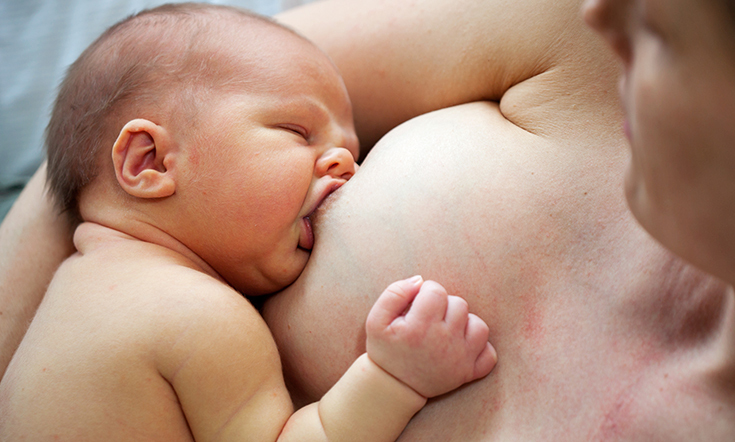

If you’re expecting, you may have come across the term “cluster feeding” and wondered what it was all about.
If you’re a new mum, you’ve almost certainly heard these two words, most likely by a hospital midwife during those first days after birth as you wonder if you’ll ever sleep again!
If you were anything like me though you’d have heard the words and promptly forgotten them as you tried to satisfy your hungry baby.
So, what is cluster feeding?
As you might expect, the term cluster feeding is used when baby signals he is hungry, has a feed and self-releases, seemingly satisfied – but then continues to cue again and again for a long period of time.
According to Clinical Midwife and Lactation Consultant Lois Wattis, baby’s periods of repeated feedings often coincide with physical and mental developmental stages.
“The periods of increased need to feed in the first 6 months are fairly predictable – typically occurring at 2-3 days when baby is ‘calling the milk in’, usually again around 2 or 3 weeks, again at around 6 weeks, very commonly around 3 months and again around 6 months of age,” says Lois.
“However, it is also common for babies of all ages to cluster feed for a period of the day – typically in the late afternoon or early evening.
“At this time of day mother’s milk supply is usually less abundant and baby instinctively feeds more frequently, which stimulates her breastmilk production as well as meeting baby’s hunger for food and also comfort during periods of fussiness.”
Cluster feeding can be stressful, tiring and sometimes painful but according to Lois, your body should adjust in sync with your baby’s changing needs if you follow and respond to their feeding cues.
“The breasts’ response to frequent stimulation and draining later in the day is to increase milk production overnight, continually adjusting to meet baby’s growing needs.”
To combat exhaustion due to overnight feeding frenzies, Lois suggests going back to bed with your baby during the day (if possible) and continue to feed her on demand.
“To facilitate the adjustment of mother’s milk supply during a period of increased feeding she may need to abandon whatever plans she had for that day and ‘just feed the baby’
“Her body will respond by adjusting her milk supply within 24-48 hours. Cluster feeding is not only about the volume of milk, but also baby’s nutritional needs.
“It is important to understand that the constituents of the breastmilk will also adjust in response to the baby’s changing needs”.
“How this happens is still not fully understood, but nature provides perfectly for growing babies”.
“Calling in help with household tasks and the care of other children will enable the breastfeeding mother to rest more and focus on her baby’s need for feeding and comfort, enhancing her body’s ability to fulfil nature’s wonderful design.”























